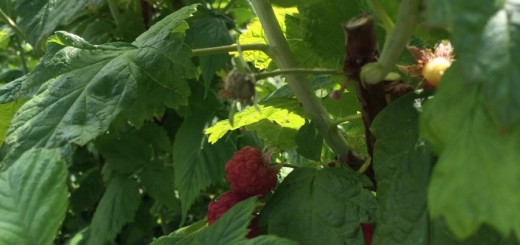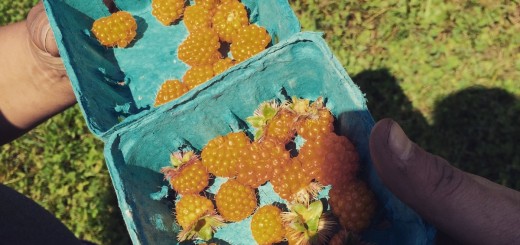Feeding the Spirit Feeding the People
Elise Krohn uses her deep interest and respect for Northwest Coastal Indian Food by telling Tribal members stories in her Feeding the People Feeding the Spirit. In the beginning parts of the book she focuses on revitalizing people’s love for traditional foods and tries to show how Native Peoples have lost their culture because the foods that normally would’ve been eaten that have a large cultural influence aren’t being eaten anymore because of colonialism and climate change. A small story- told by Hank Gobin from the Tulalip Tribes, that I find heartbreaking says: “As I sat beside her, she reached into another pocket and pulled out some small pieces of smoked salmon wrapped in another white handkerchief. In another pocket, she had some flat bread traditionally baked in the sand. There we sat, on the banks of the Quil Ceda Creek eating wild strawberries, smoked salmon, and flat bread. We ate, we rested, and it was quiet. Now the strawberries are gone, the dense green forest has vanished, the abundance of birds in non-existent, and the Quil Ceda Creek is dark and polluted.” Elise Krohn 2010, 14. This story really affected me because a large part of culture is food, and how most of my family learns about our culture is making food and listening to the stories told by my grandfather, and my aunts. When people can’t learn about their food and learn about culture by harvesting traditional foods or preparing them it’s a loss of culture that is devastating. Elis Krohn does a great job of highlighting the problem by giving credit to the people of these surrounding Northwest tribes of her acknowledging by naming them in each story she has gathered. It’s refreshing having a non indigenous giving credit to where credit is due.
Not only is the lack of traditional food a cultural genocide if I’m being radical with the idea, but it’s affecting the actual health of Indigenous Peoples. Native Americans are apart of the highest suicide rates, and diabetes rates. Krohn states: Native foods, which are rich in complex nutrients, were replaced with commodity foods that are high in carbohydrates, sugar, dairy, and poor quality fats. This has been detrimental to the health of many Indian people. According to Rudolph Ryser, Chair of the Center for World Indigenous Studies, diabetes, heart desires, and other chronic illnesses are symptoms of a diet that does not fit a people.”Krohn 2010, 17 Krohn says that the way to destruct these barriers is to address and mend a loss of rights, environmental toxins, loss of land, and to battle modern food versus traditional foods. So basically Indigenous people and non Indigenous people need to de-colonize. Which is something that has taken me years and will take me years to do to myself.
Colonization and cultural oppression is addressed in this book and it touches on a subject that not many people know about-Christian boarding schools. My partner and I were talking one night and when I brought up that one of my mentors at the garden escaped being put into a Christian boarding school, my partner was shocked and she never heard of that. It’s an aspect of history that has been covered up by white history and I appreciate that Krohn sheds light on that part of history. I remember a quote well that my Grandfather told me “kill the Indian save the man.” This is touched in the book because it’s a huge part of losing culture. Elise Krohn then sandwhiches all of this hard to swallow information with cultural food information.
Elise’s second half of the book is dedicated to information on berries, edible greens, seafood, wild game. While giving information on these foods she still incorporates people’s stories. “They were as long as I was. I remember I cut my finger on the gills of the teeth of the Coho. My father refused to help me, it was my chore and I had to learn to do it. Even though the fish were as big as I was…I don’t recall seeing fish that big ever again in the White River. That was the last time.” Krohn 2010, 94. An important aspect of these cultures is oral tradition and it’s a huge way of teaching about the past which will influence how people continue with the future. Krohn’s utilisation of such a traditional role while trying to shed light on these issues isn’t only informative on how imperative this topic is, but it’s respectable and sincere.




